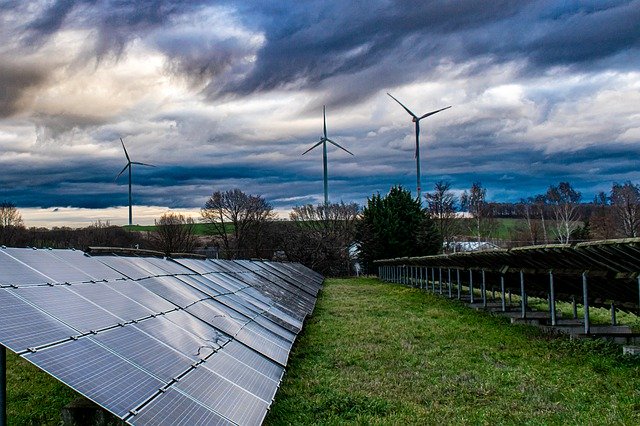
Fixing the Future: Environmental Engineers and Climate Change
Read a summary using the INOMICS AI tool
A climate crisis looms over our heads. The struggle to save our planet – that is, to save ourselves – has never been more pressing. The realities of the coming catastrophe are becoming more obvious, projected daily on our television screens. An IPCC report from 2018 showed definitively that droughts and rainfall deficits, massive damage to ecosystems and biodiversity, and higher rates of disease and crop failures (all of which lead to increases in poverty and death, especially across the developing world, and all of which we’ve seen already), will become even worse in the near-future if we don’t do something about the climate change problem now. And people are starting to get worried too, even if they aren’t prepared to give up their hard-earned cash to alleviate the problem. The Atlantic reported in 2019 that, while the majority of Americans are unwilling to pay even $10 a month to counteract these problems, seventy percent of Americans say these issues are of personal concern to them. The climate problem is real and it’s urgent. So where does engineering fit into all this?
Engineering change
Environmental engineering has existed, though not under its current name, since before the Common Era. Humans have always tried to figure out ways to control the environment in order to make it safer for humans to use, even if they often destroyed it in the process. Way back in 3000 B.C.E. the Indus Valley Civilisation was cleaning its water and depositing it into wells, baths and storage tanks, and it had relatively sophisticated sewage and drinking water systems. Fast forward five millennia and the story is much the same. Environmental engineers have come up with the most innovative solutions to waste management, recycling and the protection of public health we’ve ever seen; and the related practice of sustainable energy owes a debt to those environmental engineers who spent their time working out how we could lead a better, healthier existence, while at the same time protecting the environment.
Take the National Environmental Policy Act (NEPA), passed by the United States on 1 January 1970. The act specified that Federal agencies were obliged to provide environmental assessments and impact statements before moving forward with any actions. This means that, for example, if a Federal agency was looking to build a new highway route, it would have to provide detailed analysis of how this would affect the environment and act to minimise those effects. Moreover, it stated that every single person has the responsibility to preserve the environment, “as trustees for succeeding generations.” As a result of this act, over a hundred other developed countries adopted similar laws that stated the environment must be an immediate concern when any major engineering works were planned. Environmental engineers would be the ones who would carry out these risk and impact assessments, hoping to mitigate environmental damage.
The act was a direct result of a developing environmental consciousness due not only to Rachel Carson’s famous 1962 book Silent Spring, but also because of the 1969 Santa Barbara oil spill, which caused mass outrage. Since then, concern for nature has become a bigger part of the engineer’s job as the general public has become more environmentally conscious and governments have begun to respond in kind.
Unfortunately, for all the efforts of environmental engineers, the current climate systems breakdown isn’t getting better, but worse. If we are going to do something about the forthcoming disaster, engineers are going to have to remain on the front lines, brandishing their innovative solutions like bayonets against the invading global warming army. And this enemy is an insidious one.

Solar cities and globalised work
Globally, environmental engineering is “one of the fastest-growing engineering disciplines… [with] future growth rate in terms of investment at somewhere between 12 and 15% annually”, according to a 2011 Canadian report. One of the main areas this investment will fund is the provision of safe, clean drinking water for people in heavily populated countries such as India and China. This will be led by new processes in contamination reduction, and will also help to improve water and wastewater systems, both of which are essential for improving the general quality of water provided to populations. And naturally, environmental engineers will continue developing sustainable energy sources, making them more efficient and, in the long run, cheaper. Already we see this happening, Elon Musk’s SolarCity being a prime example of more affordable solar energy that creates jobs for engineers. The U.S. has a target of 20% wind power by 2030, a goal which requires 100,000 wind turbines and will create up to 500,000 new jobs, many of which will be in the field of environmental engineering. This, along with the United Kingdom’s current target of zero emissions by the same date, means engineers will have their work cut out for them over the next decade.
But the discipline faces challenges in the job market. In North America especially, faculty positions have been decreasing in frequency even as market demand for engineers increases. Moreover, many working professionals are set to retire in the coming years, meaning an employment deficit is expected. Western countries may also begin to lose their environmental engineers as exciting and lucrative opportunities arise in other places across the world, a result of an increasingly globalised workforce. With globalisation comes another problem, too: as more workers from developing countries move to the West willing to work for less, the average wage for engineers is set to decrease. Environmental engineers may, however, be protected from this, as they are seen as essential for our future, and therefore worth the money. Nonetheless, engineering faces problems in the job market at a critical juncture in our world history.
Suggested Opportunities
- Conferenza
- Posted 4 days ago
45th RSEP International Multidisciplinary Conference
Between 4 Feb and 5 Feb in Lisbon, Portogallo
- Professional Training Course
- (Online)
- Posted 6 days ago
Data Science for Economics Course
Starts 17 Feb at Barcelona School of Economics in Barcelona, Spagna
Fixing the future
If environmental engineering is going to face the challenges of the impending climate catastrophe, it will be forced to evolve. Education will have to be overhauled in order to deal with the concerns of the future and make the discipline more appealing to prospective students. One of the things brought up in the 2019 study Environmental Engineering for the 21st Century was the fact that engineers will have to change tact from simply solving problems to predicting them and fixing them before they have developed. This means, at its most basic level, working with experts from other fields to prevent disaster before it starts. Important players in this will be those in the social sciences, who will enable engineers to learn about the social, economic, legal, and political contexts within which they work.
Some of this has already started: universities have begun to implement, for example, leadership initiatives which layer, on top of the environmental engineering degree, courses in social consciousness and creativity. Moreover, continuing education will become ever more important as the number of those with undergraduate degrees increases – a good thing by anyone’s estimation, but something that arguably lowers the value of a BSc or BA. Specialisation will also become more important, again forcing students to continue into highly-specialised graduate programs. And it isn’t only experts who need to be brought into the equation, but the public, too: as interest in the environment and the protecting of it increases, environmental engineers will be forced to deal with the demands of an ever-more-vocal public.
All of these developments will transform the discipline of environmental engineering into something truly modern. The field has something essential to contribute to the health and prosperity of the world, particularly as climate change is now at the top of the agenda. Climate problems have to be prevented before they have materialised, because this crisis can’t be solved after the fact: it needs to be mitigated with preventions. Whether improving water supplies, helping to grow the sustainable energy sector, or working with the public, experts and at-risk communities to adapt to a fast-changing world, environmental engineers in particular will be at the forefront of the solution to the most pressing concern of our time – perhaps of all time. They have continued proving they are up to the job; now, with the developments that are required of them, they will have to work harder than ever.
-
- Programma di Dottorato
- Posted 11 months ago
PhD Programme in Economics (with optional M.Sc. Economic Research)
Starts 1 Oct at University of Cologne and Universität zu Köln, WiSo-Fakultät and Cologne Graduate School in Management, Economics and Social Sciences in Köln, Germania -
- Conferenza
- Posted 2 weeks ago
Emerging Macroeconomic, Financial, and Environmental Policy Challenges in an Era of Policrises and Rising Uncertainties
Between 23 Mar and 24 Mar in Milan, Italia
-
- PhD Program, Master's Program
- Posted 3 days ago
Graduate Programs in Economics and Business Data Science (MRes+PhD opportunity)
Starts 1 Sep at Tinbergen Institute (TI) in Amsterdam, Olanda











